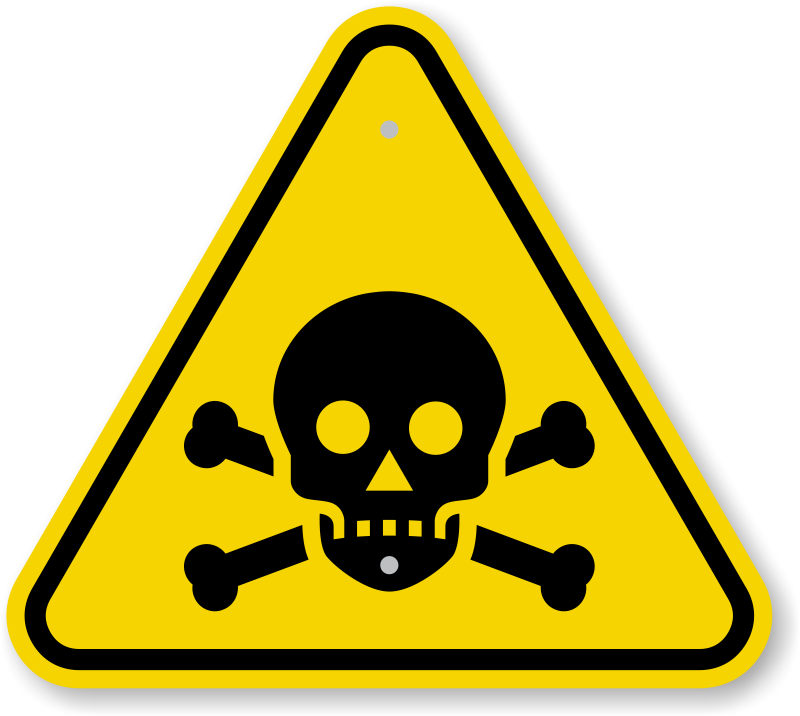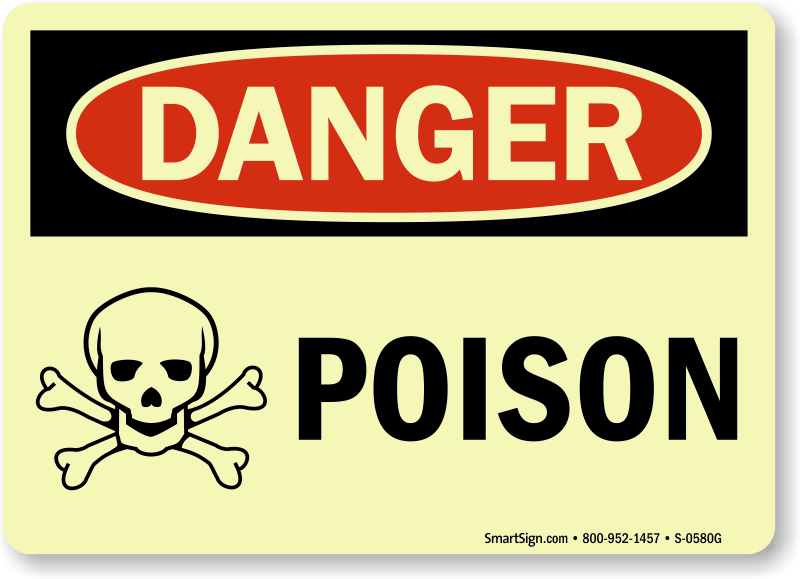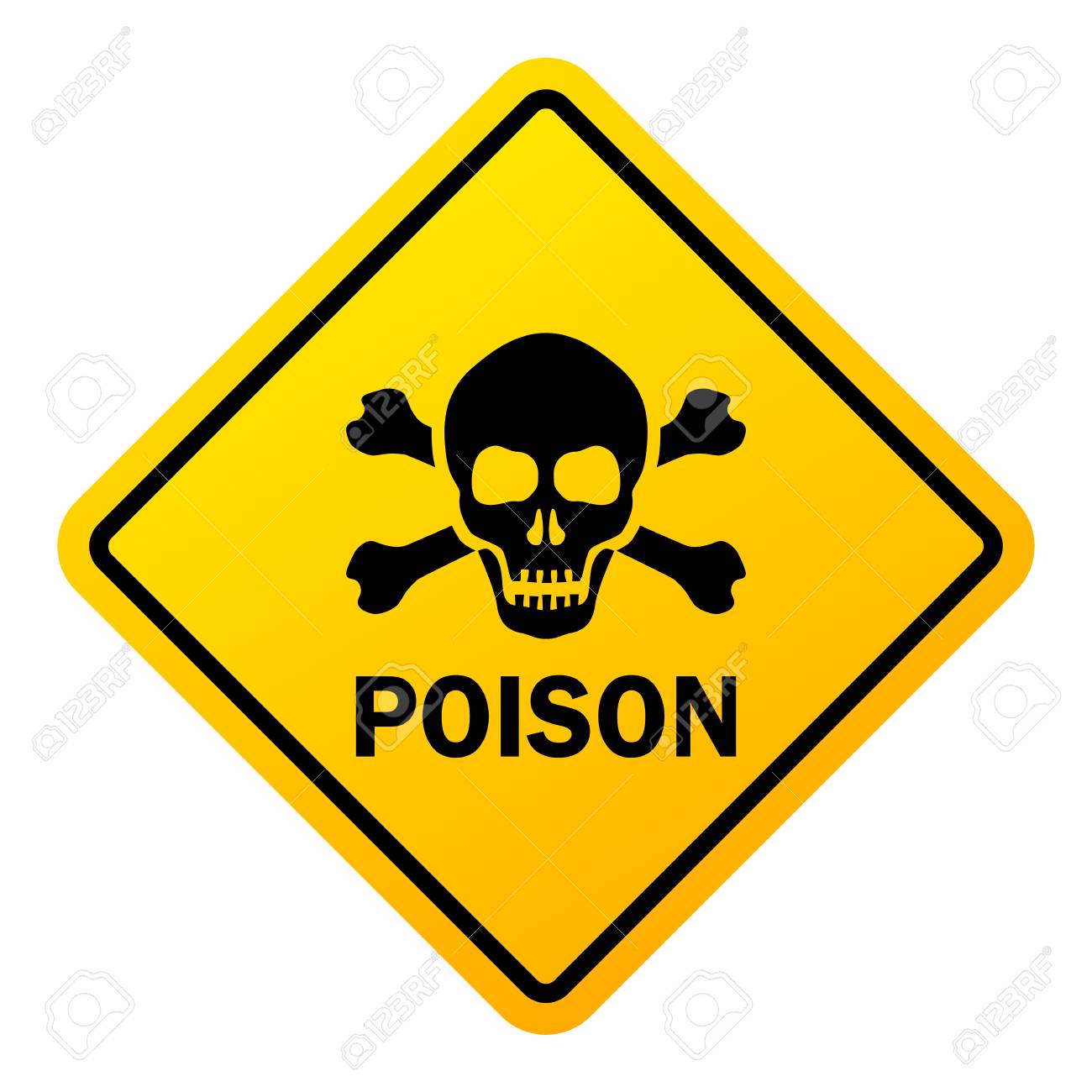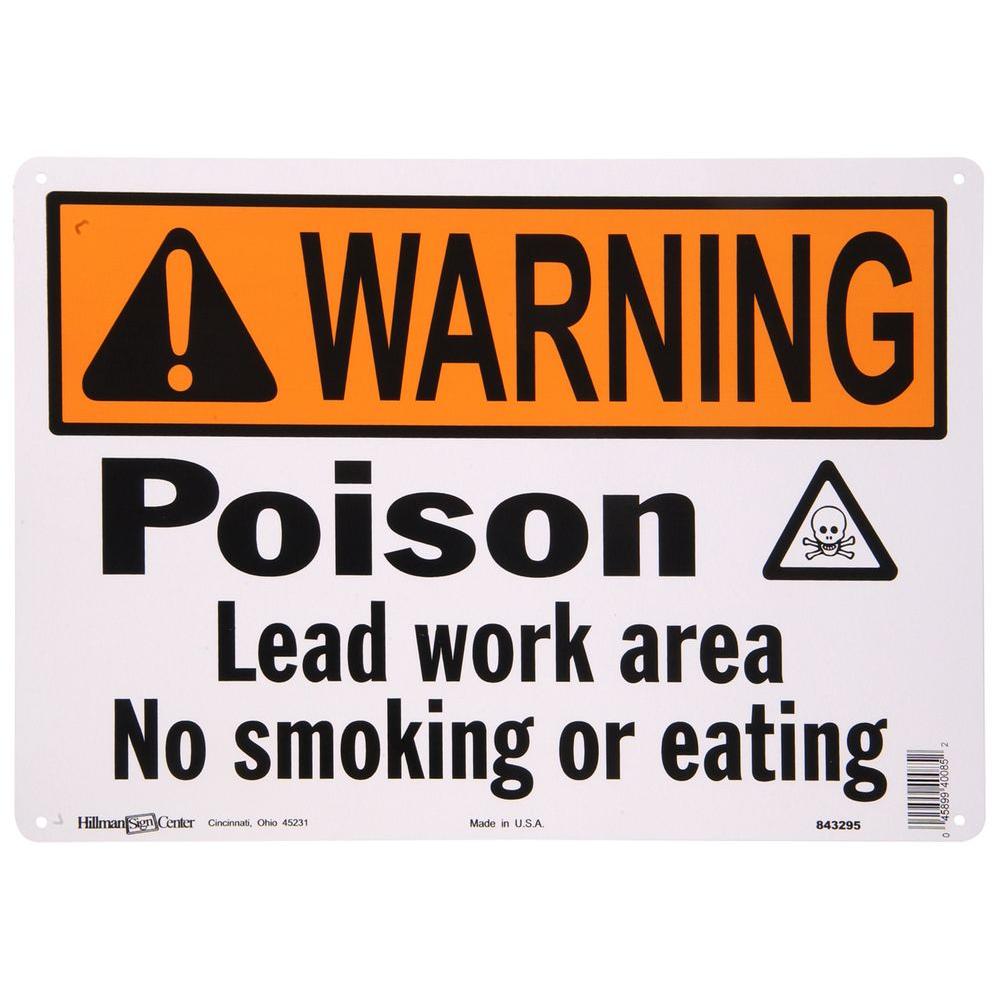It is proven now that they had used tons of lead content 800 years ago to build that toxic worship place, which spread toxic Chow Ang Moh ideas into people brains too. The fire brought the toxic lead out via smoke and settled down all over!
https://www.channelnewsasia.com/new...llution-risks-after-notre-dame-blaze-11519478
Officials warn of lead pollution risks after Notre-Dame blaze
The blaze that destroyed Notre-Dame's roof released large amounts of toxic lead particles that have settled on surrounding streets and buildings. (Photo: AFP/Thomas Samson)
09 May 2019 11:15PM (Updated: 09 May 2019 11:19PM)
Share this content
Bookmark
PARIS: The fire that ravaged the Notre-Dame cathedral in Paris last month released lead particles that have settled in potentially dangerous amounts in areas surrounding the church, officials said on Thursday (May 9).
Analysis carried out since the Apr 15 blaze has detected lead dust in "very significant" levels on some streets and pavements outside the cathedral, which remain off limits to the public.
Between 10-20 grammes of lead per kilogramme (g/kg) were detected in soil samples, compared with normal background levels of just 0.3 g/kg, according to a statement from the police and the ARS regional health service.
The fire destroyed the roof and steeple of the 850-year-old landmark, melting the large sheets of lead that covered an intricate wooden framework.
But officials said testing had not revealed any lingering lead pollution in the air, with all atmospheric analyses showing less than the legal limit of 0.25 microgrammes per cubic meter (µg/m3).
And outside the areas immediately surrounding the cathedral, "no sample on the Ile de la Cite or along the banks of the Seine indicated any lead levels in soils above the benchmark level," the statement said.
The Robin des Bois (Robin Hood) environmental NGO estimates the roof and steeple contained more than 300 tons of lead that melted in the blaze, and has urged officials to "decontaminate" the site before carrying out any reconstruction work.
Lead pollution can cause neurological defects for humans, especially children, as well as nervous system and kidney problems.
CLEANING URGED
Officials said the lead posed little danger to residents, since only "repeated ingestions" of the toxic metal would be harmful to health.
There have been no reports of acute lead poisoning since the fire.
But the statement urged residents to clean all surfaces in their homes with wet cloths or wipes and to avoid the use of vacuum cleaners.
People should also wash their hands regularly and keep their fingernails cut short.
It also advised parents to wash toys often, since the faster metabolism in children under six makes any exposure to lead a particular risk.
Pregnant women should also take precautions to protect their babies from any exposure.
"Additional investigations are under way and testing will be carried out regularly to measure lead levels and ensure that health risks are kept under control," officials said.
The cathedral is expected to remain closed to visitors for years as workers clear away debris before embarking on an ambitious plan to restore the roof within five years.
The government has launched an international architectural competition for the reconstruction, raising the prospect of modern touches to a structure dating from the 13th century.
A YouGov poll this month found that 54 per cent of respondents wanted the cathedral rebuilt exactly as it was, with only a quarter supporting the idea of adding a modern architectural touch to the historic building.
Source: AFP/ec
http://www.sohu.com/a/313008702_115376?spm=smpc.home.fspic.3.1557467046931aF1uP8p
海外网
6万文章 72亿总阅读
查看TA的文章>
216
巴黎圣母院燃烧后变“毒院” 铅含量最高达限值65倍
2019-05-10 08:29
巴黎圣母院大火:专家-修复和重建工程耗资大时间长
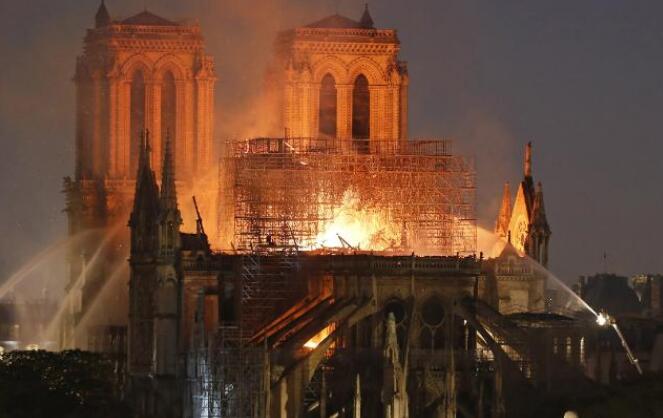
海外网5月10日电法国巴黎圣母院4月遭遇的火灾除了让这座全球知名建筑受损严重,还留下了威胁人体健康的安全隐患。当地警方警告,教堂因大火而融化的屋顶在圣母院前的广场和周围的马路上留下了极高含量的铅,是建议安全限值的32至65倍。但他们也坚称,目前还没有通过空气吸入有毒物质的危险。
综合美国有线电视新闻网等媒体报道,巴黎警方在9日发布的一份声明中称,在火灾发生后,圣母院外的空气环境未检测出人体有吸入铅的风险,但在圣母院周边确实存在着铅尘。
目前,圣母院的广场仍然处于关闭状态,这里的铅含量是法国卫生当局建议的每千克土壤含铅0.3克安全限值的32至65倍。声明中也提到:“(铅)的含量非常高,在每千克土壤10至20克左右”。
警方警告称,6岁以下儿童和孕妇最容易因多次摄入铅导致中毒。他们建议该地附近的人经常洗手。当地居民也被告知使用湿拖把和抹布擦拭和清扫他们的公寓。
法国环保团体“罗宾汉”组织曾指出,巴黎圣母院的教堂顶部和尖塔的建筑材料有至少300吨铅被高温熔化。他们称教堂当前“如同一处工业废弃地”,呼吁法国当局对产生的大量瓦砾、灰烬和废水进行处理。
当地时间4月15日晚,巴黎地标性建筑巴黎圣母院遭遇火灾,整座建筑损毁严重。巴黎圣母院耸立在塞纳河西堤岛上,拥有850年历史,是法国最具代表性的文物古迹之一,被联合国教科文组织列入世界遗产名录。圣母院建筑总高度约超过130米,是欧洲历史上第一座完全哥特式的教堂,具有划时代的意义,也是巴黎历史悠久最具代表性的古迹、观光名胜与宗教场所。这座哥特式教堂更因法国文学家雨果所著作的《巴黎圣母院》而闻名。(海外网 张霓)返回搜狐,查看更多
https://news.vice.com/en_us/article...e-caused-lead-levels-in-the-area-to-skyrocket
The Notre Dame Fire Caused Lead Levels in the Area to Skyrocket
 The Notre Dame Fire Caused Lead Levels in the Area to Skyrocket
The Notre Dame Fire Caused Lead Levels in the Area to Skyrocket
By Tim Marcin May 10, 2019

When the 850-year-old Notre Dame cathedral went up in flames last month, its spire and parts of its frame — which contained hundreds of tons of lead — burned to the ground. Now, lead levels on surfaces surrounding the famed Paris cathedral are dozens of times higher than what’s safe, police warned Thursday.
Authorities said lead levels from the landmark's melted roof were between 32 and 65 times the recommended limit from French health officials, according to the Associated Press. Authorities said the grounds immediately adjoining Notre Dame — presently closed to the public — were found to have high levels of lead but added there was no risk of air inhalation or in areas further from the cathedral, the Guardian reported. Airparif, which monitors air quality in Paris, found pollution levels weren’t above normal levels after the fire.
Nearly two weeks after the April 15 blaze, police recommended that locals wipe down any surfaces that might be affected by dust filled with lead. Authorities also recommended children and pregnant women wash their hands frequently.
Officials have stressed, however, that lead poisoning is typically something that happens over long periods of exposure and that there have not been reports of acute poisoning cases.
French environmental group Robin des Bois has issued warnings on the levels of lead after the fire, believed caused by renovation work, and are expected to do so again later this week. Four days after the fire, the group issued a statement saying the cathedral had been reduced to a “state of toxic waste.”
https://www.nytimes.com/2019/04/25/world/europe/notre-dame-fire-investigation.html
Notre-Dame Fire Investigators Focus on Short-Circuit and Cigarettes
Notre-Dame Cathedral in Paris on Thursday, when police investigators entered for the first time since the structure was stabilized.CreditThibault Camus/Associated Press

Image

Notre-Dame Cathedral in Paris on Thursday, when police investigators entered for the first time since the structure was stabilized.CreditCreditThibault Camus/Associated Press
By Adam Nossiter
On Thursday, for the first time, police investigators were allowed to search the cathedral’s vast interior for clues, said a police official who was not authorized to speak to the news media and requested anonymity.
The investigators had been prevented from going into the cathedral before Thursday because of concerns about the stability of the damaged structure, whose stone was weakened in the intense heat, the official said.
More than a week after the catastrophic fire shook France and gripped the world, toppling the cathedral’s spire and leading to an outpouring of support, investigators are still seeking a cause of the blaze.
The official said that so far nothing was being ruled out and that the investigation could last several weeks. It was being complicated by the intensity of the blaze, as well as by the tons of water used by firefighters to put it out, both of which destroyed evidence.
But the official said that the investigators had already interrogated dozens of individuals, including workers, company officials, cathedral staff, architects and others in the local government.
You have 2 free articles remaining.
Subscribe to The Times
So far attention has focused on a number of electrical installations near the spire, including a series of six midsize bells, according to officials with knowledge of the complex interplay of elements that existed until 10 days ago at the church summit.
The police have also found cigarette butts on the scaffolding — a possible explanation for the blaze, though one strongly disputed by a spokesman for the company that erected it. Restoration work had begun at the church before the fire, and much of the building was sheathed in scaffolding.
The police official confirmed, however, that smoking — forbidden under company rules — was being considered as a cause, among others.
Editors’ Picks

NPR’s ‘Morning Edition’ Changes Its Tune After 40 Years
Yet already looming as a backdrop for the investigation was a conflict that routinely plays out in efforts to preserve France’s vast catalog of historic monuments: tradition against modernity.
People outside Notre-Dame, where investigations into the cause of the fire could take weeks.
CreditThibault Camus/Associated Press

Image

People outside Notre-Dame, where investigations into the cause of the fire could take weeks.
CreditThibault Camus/Associated Press
Notre-Dame’s contemporary custodians — its architects, priests and caretakers — wanted to preserve the structure’s medieval essence. But over the years they made a number of concessions that might ultimately have threatened it, including electrifying the two sets of bells, originally installed by the 19th-century architect Eugène Viollet-le-Duc, who gave Notre-Dame a vast face-lift.
The architect in charge of Notre-Dame until 2013, Benjamin Mouton, had warned in 2010 against installing lights amid the beams because of the area’s “combustion potential” and the “fire risk” such lights posed, according to notes preserved in the state archives related to historical monuments.
Yet the bells at the top of the cathedral — three in the spire and, beneath it, three in the vast attic of ancient interlaced beams known as the forest — were electrified in any case in two stages in 2012 and 2007.
The vast majority of church bells in France, to be sure, are electrified. But only Notre-Dame had the forest — there was no comparably complex assemblage of ancient dried wood, some of it dating to the 13th century.
Anything similar had already burned, experts said, and on the night of April 15, Notre-Dame’s beams, too, joined that destiny.
Sign up for The Interpreter
Subscribe for original insights, commentary and discussions on the major news stories of the week, from columnists Max Fisher and Amanda Taub.
“That the fire started in the bells — that is pertinent, and plausible,” said Régis Singer, a bells specialist at the Ministry of Culture who wrote a report on the electrification of the spire bells.
Nicolas Gueury, who electrified the other set of bells, in 2007, quickly ruled the idea out in an interview this week, while conceding, ‘‘Of course, I’ve thought about it.”
Mr. Gueury, now retired, worked for Mamias, a company that for decades has made a specialty out of electrifying church bells in France.
“For me, this would be impossible,” he said, adding that a sizable catalog of safeguards against dysfunction — circuit breakers, shielding — were installed at the same time. “It was draconian. We tripled the precautions,” he said.
“We were all hyper-prudent. You don’t do just anything in the forest,” he said. “It was hyper-securitized.”
“There was a real kind of delirium about it,” he said. “So much so, that we thought about dropping the whole project.”
Firefighters at Notre-Dame. The intensity of the blaze and the tons of water used to put it out have complicated the investigation.CreditThibault Camus/Associated Press

Image

Firefighters at Notre-Dame. The intensity of the blaze and the tons of water used to put it out have complicated the investigation.CreditThibault Camus/Associated Press
He did not, however.
He pointed out that if a short-circuit had occurred, it could have done so only at the moment when the bells were being sounded — at the moment when the priest celebrating mass pushed a button, sending electricity to the bells above.
On the night of April 15, Mr. Gueury’s bells had not yet rung by the time of the first fire alarm, at 6:21 p.m., but five minutes later.
The bells in the spire had sounded, however, at 6:04 p.m., as they always did to announce the Mass at 6:15. Those bells worked on the same principle — they were set off by an electric impulse.
Another hypothesis being considered is possible negligence of workers at the site. That theory has gained in plausibility since the discovery by the police of cigarette butts on the scaffolding.
Three days before the fire broke out, at least one worker was observed smoking while on the scaffolding, according to a French official with knowledge of the situation, who spoke on the condition of anonymity, citing the sensitivity of the matter.
A spokesman for the scaffolding company said Thursday: “Workers might have smoked at the work site outside, and we regret it.’’
The spokesman added, however, that the workers “did not go into the attic on the day of the fire.’’
‘‘A cigarette could not have caused the fire,’’ he insisted.
The last worker left and switched off the electric fuse box for the scaffolding at 5:50 p.m., 30 minutes before the alarm sounded in the cathedral, and the public was evacuated a first time, only to be called back in minutes later.
But some few minutes before that alarm, security workers at the cathedral had received a visual alert of a problem in the attic from their system’s detectors, according to Elytis, the company in charge of fire security.
It wasn’t until about 40 minutes later that the first firefighters arrived, nine minutes after they got the call.
“The call to security services — must it be conditional on the lifting of all doubts?’’ he wrote. ‘‘In the case of the sensitive zones, like the summit and the towers, can one take the risk of waiting 15 minutes before calling for help? Isn’t a false alarm to the fire department better than a fire?”
Reporting was contributed by Elian Peltier, Liz Alderman, Daphné Anglès, Aurelien Breeden and Constant Meheut.
A version of this article appears in print on April 26, 2019, on Page A4 of the New York edition with the headline: Top Theories of Notre-Dame Culprit: Electrified Bells, and Smoking. Order Reprints | Today’s Paper | Subscribe
https://www.theguardian.com/world/2...-of-toxic-inhalation-from-air-near-notre-dame
Notre Dame fire: police say air not toxic despite high lead levels on ground
High lead levels after cathedral fire have led to concerns from environmental groups
Angelique Chrisafis in Paris
@achrisafis
Thu 9 May 2019 16.18 BST Last modified on Thu 9 May 2019 19.10 BST
Shares
14
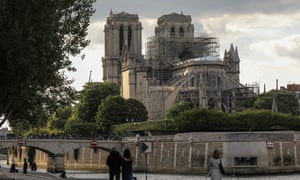
Hundreds of tons of lead were used in Notre Dame’s frame. Photograph: Ludovic Marin/AFP/Getty Images
Paris authorities have warned of very high lead levels on the ground immediately surrounding the fire-damaged Notre Dame cathedral but insisted there was no danger from breathing the air, after environmental groups likened the site to “toxic waste”.
The latter are preparing to step up pressure this week over the possible pollution danger from toxic metal particles from the cathedral fire. Campaign groups will hold a press conference on Friday to warn of their concerns about the danger from the combustion of lead in last month’s blaze which destroyed the Gothic cathedral’s roof, spreading lead-laden dust.
Paris police issued a statement on Thursday saying there was no risk of toxic inhalation from the air and that high lead levels found on the ground were limited to the area immediately surrounding the cathedral – which is currently closed to the public – and not further afield.
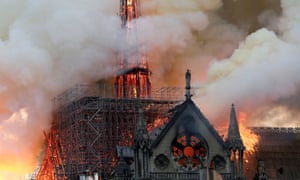
Facebook Twitter
Pinterest
Smoke billows as fire engulfs the spire of Notre Dame cathedral on 15 April 2019. Photograph: Benoît Tessier/Reuters
Hundreds of tons of lead were used in Notre Dame’s frame, as well as the church spire that burned and collapsed on 15 April in a blaze which is being treated as accidental. When the cathedral roof caught fire it led to the combustion of vast amounts of the metal.
The Paris police statement on Thursday said that on the surface of pavements and gardens immediately adjoining the cathedral, lead levels were found to be very high: between 32 and 65 times the recommended limit by French health authorities. The areas closest to the cathedral are currently closed. Lead levels are also high within the cathedral itself.

Notre Dame's neighbours warned of lead contamination risk after fire
Read more
But the police said there was no sign of higher-than-normal lead levels on the ground in the wider neighbourhood around Notre Dame.
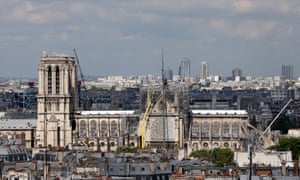
Facebook Twitter
Pinterest
Temporary tarpaulins cover the roof of the Notre Dame cathedral to protect it from rain damage following the massive fire. Photograph: Chesnot/Getty Images
Shortly after the fire, the Paris police advised locals to clean surfaces with a damp cloth and pregnant women and children to wash hands frequently.
“With regard to homes or private premises, it is recommended that residents in the immediate vicinity of the Notre Dame proceed to clean their home or premises and their furniture and other items, using wet wipes to eliminate any dust,” police had said.
But the French environmental campaign group Robin des Bois has warned that about 300 tonnes of lead from the cathedral’s roof and steeple had melted in the blaze. “The cathedral has been reduced to the state of toxic waste,” the association said shortly after the fire, urging authorities to detoxify the tonnes of rubble, ash and wastewater produced in the disaster.
The group will on Friday reiterate its concerns over health risks from the blaze and possible contamination of the Seine.
Since the fire, the police have maintained that the threat from lead was limited, saying lead poisoning usually builds up over years of exposure. There have been no reports of acute lead poisoning since the blaze that destroyed the roof of the 850-year-old landmark.
https://www.channelnewsasia.com/new...llution-risks-after-notre-dame-blaze-11519478
Officials warn of lead pollution risks after Notre-Dame blaze
The blaze that destroyed Notre-Dame's roof released large amounts of toxic lead particles that have settled on surrounding streets and buildings. (Photo: AFP/Thomas Samson)
09 May 2019 11:15PM (Updated: 09 May 2019 11:19PM)
Share this content
Bookmark
PARIS: The fire that ravaged the Notre-Dame cathedral in Paris last month released lead particles that have settled in potentially dangerous amounts in areas surrounding the church, officials said on Thursday (May 9).
Analysis carried out since the Apr 15 blaze has detected lead dust in "very significant" levels on some streets and pavements outside the cathedral, which remain off limits to the public.
Between 10-20 grammes of lead per kilogramme (g/kg) were detected in soil samples, compared with normal background levels of just 0.3 g/kg, according to a statement from the police and the ARS regional health service.
The fire destroyed the roof and steeple of the 850-year-old landmark, melting the large sheets of lead that covered an intricate wooden framework.
But officials said testing had not revealed any lingering lead pollution in the air, with all atmospheric analyses showing less than the legal limit of 0.25 microgrammes per cubic meter (µg/m3).
And outside the areas immediately surrounding the cathedral, "no sample on the Ile de la Cite or along the banks of the Seine indicated any lead levels in soils above the benchmark level," the statement said.
The Robin des Bois (Robin Hood) environmental NGO estimates the roof and steeple contained more than 300 tons of lead that melted in the blaze, and has urged officials to "decontaminate" the site before carrying out any reconstruction work.
Lead pollution can cause neurological defects for humans, especially children, as well as nervous system and kidney problems.
CLEANING URGED
Officials said the lead posed little danger to residents, since only "repeated ingestions" of the toxic metal would be harmful to health.
There have been no reports of acute lead poisoning since the fire.
But the statement urged residents to clean all surfaces in their homes with wet cloths or wipes and to avoid the use of vacuum cleaners.
People should also wash their hands regularly and keep their fingernails cut short.
It also advised parents to wash toys often, since the faster metabolism in children under six makes any exposure to lead a particular risk.
Pregnant women should also take precautions to protect their babies from any exposure.
"Additional investigations are under way and testing will be carried out regularly to measure lead levels and ensure that health risks are kept under control," officials said.
The cathedral is expected to remain closed to visitors for years as workers clear away debris before embarking on an ambitious plan to restore the roof within five years.
The government has launched an international architectural competition for the reconstruction, raising the prospect of modern touches to a structure dating from the 13th century.
A YouGov poll this month found that 54 per cent of respondents wanted the cathedral rebuilt exactly as it was, with only a quarter supporting the idea of adding a modern architectural touch to the historic building.
Source: AFP/ec
http://www.sohu.com/a/313008702_115376?spm=smpc.home.fspic.3.1557467046931aF1uP8p
海外网
6万文章 72亿总阅读
查看TA的文章>
216
- 分享到
巴黎圣母院燃烧后变“毒院” 铅含量最高达限值65倍
2019-05-10 08:29
巴黎圣母院大火:专家-修复和重建工程耗资大时间长

图源:CNN
海外网5月10日电法国巴黎圣母院4月遭遇的火灾除了让这座全球知名建筑受损严重,还留下了威胁人体健康的安全隐患。当地警方警告,教堂因大火而融化的屋顶在圣母院前的广场和周围的马路上留下了极高含量的铅,是建议安全限值的32至65倍。但他们也坚称,目前还没有通过空气吸入有毒物质的危险。
综合美国有线电视新闻网等媒体报道,巴黎警方在9日发布的一份声明中称,在火灾发生后,圣母院外的空气环境未检测出人体有吸入铅的风险,但在圣母院周边确实存在着铅尘。
目前,圣母院的广场仍然处于关闭状态,这里的铅含量是法国卫生当局建议的每千克土壤含铅0.3克安全限值的32至65倍。声明中也提到:“(铅)的含量非常高,在每千克土壤10至20克左右”。
警方警告称,6岁以下儿童和孕妇最容易因多次摄入铅导致中毒。他们建议该地附近的人经常洗手。当地居民也被告知使用湿拖把和抹布擦拭和清扫他们的公寓。
法国环保团体“罗宾汉”组织曾指出,巴黎圣母院的教堂顶部和尖塔的建筑材料有至少300吨铅被高温熔化。他们称教堂当前“如同一处工业废弃地”,呼吁法国当局对产生的大量瓦砾、灰烬和废水进行处理。
当地时间4月15日晚,巴黎地标性建筑巴黎圣母院遭遇火灾,整座建筑损毁严重。巴黎圣母院耸立在塞纳河西堤岛上,拥有850年历史,是法国最具代表性的文物古迹之一,被联合国教科文组织列入世界遗产名录。圣母院建筑总高度约超过130米,是欧洲历史上第一座完全哥特式的教堂,具有划时代的意义,也是巴黎历史悠久最具代表性的古迹、观光名胜与宗教场所。这座哥特式教堂更因法国文学家雨果所著作的《巴黎圣母院》而闻名。(海外网 张霓)返回搜狐,查看更多
https://news.vice.com/en_us/article...e-caused-lead-levels-in-the-area-to-skyrocket
The Notre Dame Fire Caused Lead Levels in the Area to Skyrocket

By Tim Marcin May 10, 2019

When the 850-year-old Notre Dame cathedral went up in flames last month, its spire and parts of its frame — which contained hundreds of tons of lead — burned to the ground. Now, lead levels on surfaces surrounding the famed Paris cathedral are dozens of times higher than what’s safe, police warned Thursday.
Authorities said lead levels from the landmark's melted roof were between 32 and 65 times the recommended limit from French health officials, according to the Associated Press. Authorities said the grounds immediately adjoining Notre Dame — presently closed to the public — were found to have high levels of lead but added there was no risk of air inhalation or in areas further from the cathedral, the Guardian reported. Airparif, which monitors air quality in Paris, found pollution levels weren’t above normal levels after the fire.
Nearly two weeks after the April 15 blaze, police recommended that locals wipe down any surfaces that might be affected by dust filled with lead. Authorities also recommended children and pregnant women wash their hands frequently.
Officials have stressed, however, that lead poisoning is typically something that happens over long periods of exposure and that there have not been reports of acute poisoning cases.
French environmental group Robin des Bois has issued warnings on the levels of lead after the fire, believed caused by renovation work, and are expected to do so again later this week. Four days after the fire, the group issued a statement saying the cathedral had been reduced to a “state of toxic waste.”
https://www.nytimes.com/2019/04/25/world/europe/notre-dame-fire-investigation.html
Notre-Dame Fire Investigators Focus on Short-Circuit and Cigarettes
Notre-Dame Cathedral in Paris on Thursday, when police investigators entered for the first time since the structure was stabilized.CreditThibault Camus/Associated Press

Image

Notre-Dame Cathedral in Paris on Thursday, when police investigators entered for the first time since the structure was stabilized.CreditCreditThibault Camus/Associated Press
By Adam Nossiter
- April 25, 2019
On Thursday, for the first time, police investigators were allowed to search the cathedral’s vast interior for clues, said a police official who was not authorized to speak to the news media and requested anonymity.
The investigators had been prevented from going into the cathedral before Thursday because of concerns about the stability of the damaged structure, whose stone was weakened in the intense heat, the official said.
More than a week after the catastrophic fire shook France and gripped the world, toppling the cathedral’s spire and leading to an outpouring of support, investigators are still seeking a cause of the blaze.
The official said that so far nothing was being ruled out and that the investigation could last several weeks. It was being complicated by the intensity of the blaze, as well as by the tons of water used by firefighters to put it out, both of which destroyed evidence.
But the official said that the investigators had already interrogated dozens of individuals, including workers, company officials, cathedral staff, architects and others in the local government.
You have 2 free articles remaining.
Subscribe to The Times
So far attention has focused on a number of electrical installations near the spire, including a series of six midsize bells, according to officials with knowledge of the complex interplay of elements that existed until 10 days ago at the church summit.
The police have also found cigarette butts on the scaffolding — a possible explanation for the blaze, though one strongly disputed by a spokesman for the company that erected it. Restoration work had begun at the church before the fire, and much of the building was sheathed in scaffolding.
The police official confirmed, however, that smoking — forbidden under company rules — was being considered as a cause, among others.
Editors’ Picks

NPR’s ‘Morning Edition’ Changes Its Tune After 40 Years
Yet already looming as a backdrop for the investigation was a conflict that routinely plays out in efforts to preserve France’s vast catalog of historic monuments: tradition against modernity.
People outside Notre-Dame, where investigations into the cause of the fire could take weeks.
CreditThibault Camus/Associated Press

Image

People outside Notre-Dame, where investigations into the cause of the fire could take weeks.
CreditThibault Camus/Associated Press
Notre-Dame’s contemporary custodians — its architects, priests and caretakers — wanted to preserve the structure’s medieval essence. But over the years they made a number of concessions that might ultimately have threatened it, including electrifying the two sets of bells, originally installed by the 19th-century architect Eugène Viollet-le-Duc, who gave Notre-Dame a vast face-lift.
The architect in charge of Notre-Dame until 2013, Benjamin Mouton, had warned in 2010 against installing lights amid the beams because of the area’s “combustion potential” and the “fire risk” such lights posed, according to notes preserved in the state archives related to historical monuments.
Yet the bells at the top of the cathedral — three in the spire and, beneath it, three in the vast attic of ancient interlaced beams known as the forest — were electrified in any case in two stages in 2012 and 2007.
The vast majority of church bells in France, to be sure, are electrified. But only Notre-Dame had the forest — there was no comparably complex assemblage of ancient dried wood, some of it dating to the 13th century.
Anything similar had already burned, experts said, and on the night of April 15, Notre-Dame’s beams, too, joined that destiny.
Sign up for The Interpreter
Subscribe for original insights, commentary and discussions on the major news stories of the week, from columnists Max Fisher and Amanda Taub.
“That the fire started in the bells — that is pertinent, and plausible,” said Régis Singer, a bells specialist at the Ministry of Culture who wrote a report on the electrification of the spire bells.
Nicolas Gueury, who electrified the other set of bells, in 2007, quickly ruled the idea out in an interview this week, while conceding, ‘‘Of course, I’ve thought about it.”
Mr. Gueury, now retired, worked for Mamias, a company that for decades has made a specialty out of electrifying church bells in France.
“For me, this would be impossible,” he said, adding that a sizable catalog of safeguards against dysfunction — circuit breakers, shielding — were installed at the same time. “It was draconian. We tripled the precautions,” he said.
“We were all hyper-prudent. You don’t do just anything in the forest,” he said. “It was hyper-securitized.”
“There was a real kind of delirium about it,” he said. “So much so, that we thought about dropping the whole project.”
Firefighters at Notre-Dame. The intensity of the blaze and the tons of water used to put it out have complicated the investigation.CreditThibault Camus/Associated Press

Image

Firefighters at Notre-Dame. The intensity of the blaze and the tons of water used to put it out have complicated the investigation.CreditThibault Camus/Associated Press
He did not, however.
He pointed out that if a short-circuit had occurred, it could have done so only at the moment when the bells were being sounded — at the moment when the priest celebrating mass pushed a button, sending electricity to the bells above.
On the night of April 15, Mr. Gueury’s bells had not yet rung by the time of the first fire alarm, at 6:21 p.m., but five minutes later.
The bells in the spire had sounded, however, at 6:04 p.m., as they always did to announce the Mass at 6:15. Those bells worked on the same principle — they were set off by an electric impulse.
Another hypothesis being considered is possible negligence of workers at the site. That theory has gained in plausibility since the discovery by the police of cigarette butts on the scaffolding.
Three days before the fire broke out, at least one worker was observed smoking while on the scaffolding, according to a French official with knowledge of the situation, who spoke on the condition of anonymity, citing the sensitivity of the matter.
A spokesman for the scaffolding company said Thursday: “Workers might have smoked at the work site outside, and we regret it.’’
The spokesman added, however, that the workers “did not go into the attic on the day of the fire.’’
‘‘A cigarette could not have caused the fire,’’ he insisted.
The last worker left and switched off the electric fuse box for the scaffolding at 5:50 p.m., 30 minutes before the alarm sounded in the cathedral, and the public was evacuated a first time, only to be called back in minutes later.
But some few minutes before that alarm, security workers at the cathedral had received a visual alert of a problem in the attic from their system’s detectors, according to Elytis, the company in charge of fire security.
It wasn’t until about 40 minutes later that the first firefighters arrived, nine minutes after they got the call.
Mr. Mouton’s 2010 musings about the advisability of a much quicker response to potential fire, preserved in the archives, appear all the more prescient:“The call to security services — must it be conditional on the lifting of all doubts?’’ he wrote. ‘‘In the case of the sensitive zones, like the summit and the towers, can one take the risk of waiting 15 minutes before calling for help? Isn’t a false alarm to the fire department better than a fire?”
Reporting was contributed by Elian Peltier, Liz Alderman, Daphné Anglès, Aurelien Breeden and Constant Meheut.
A version of this article appears in print on April 26, 2019, on Page A4 of the New York edition with the headline: Top Theories of Notre-Dame Culprit: Electrified Bells, and Smoking. Order Reprints | Today’s Paper | Subscribe
https://www.theguardian.com/world/2...-of-toxic-inhalation-from-air-near-notre-dame
Notre Dame fire: police say air not toxic despite high lead levels on ground
High lead levels after cathedral fire have led to concerns from environmental groups
Angelique Chrisafis in Paris
@achrisafis
Thu 9 May 2019 16.18 BST Last modified on Thu 9 May 2019 19.10 BST
Shares
14

Hundreds of tons of lead were used in Notre Dame’s frame. Photograph: Ludovic Marin/AFP/Getty Images
Paris authorities have warned of very high lead levels on the ground immediately surrounding the fire-damaged Notre Dame cathedral but insisted there was no danger from breathing the air, after environmental groups likened the site to “toxic waste”.
The latter are preparing to step up pressure this week over the possible pollution danger from toxic metal particles from the cathedral fire. Campaign groups will hold a press conference on Friday to warn of their concerns about the danger from the combustion of lead in last month’s blaze which destroyed the Gothic cathedral’s roof, spreading lead-laden dust.
Paris police issued a statement on Thursday saying there was no risk of toxic inhalation from the air and that high lead levels found on the ground were limited to the area immediately surrounding the cathedral – which is currently closed to the public – and not further afield.

Facebook Twitter
Smoke billows as fire engulfs the spire of Notre Dame cathedral on 15 April 2019. Photograph: Benoît Tessier/Reuters
Hundreds of tons of lead were used in Notre Dame’s frame, as well as the church spire that burned and collapsed on 15 April in a blaze which is being treated as accidental. When the cathedral roof caught fire it led to the combustion of vast amounts of the metal.
The Paris police statement on Thursday said that on the surface of pavements and gardens immediately adjoining the cathedral, lead levels were found to be very high: between 32 and 65 times the recommended limit by French health authorities. The areas closest to the cathedral are currently closed. Lead levels are also high within the cathedral itself.

Notre Dame's neighbours warned of lead contamination risk after fire
Read more
But the police said there was no sign of higher-than-normal lead levels on the ground in the wider neighbourhood around Notre Dame.

Facebook Twitter
Temporary tarpaulins cover the roof of the Notre Dame cathedral to protect it from rain damage following the massive fire. Photograph: Chesnot/Getty Images
Shortly after the fire, the Paris police advised locals to clean surfaces with a damp cloth and pregnant women and children to wash hands frequently.
“With regard to homes or private premises, it is recommended that residents in the immediate vicinity of the Notre Dame proceed to clean their home or premises and their furniture and other items, using wet wipes to eliminate any dust,” police had said.
But the French environmental campaign group Robin des Bois has warned that about 300 tonnes of lead from the cathedral’s roof and steeple had melted in the blaze. “The cathedral has been reduced to the state of toxic waste,” the association said shortly after the fire, urging authorities to detoxify the tonnes of rubble, ash and wastewater produced in the disaster.
The group will on Friday reiterate its concerns over health risks from the blaze and possible contamination of the Seine.
Since the fire, the police have maintained that the threat from lead was limited, saying lead poisoning usually builds up over years of exposure. There have been no reports of acute lead poisoning since the blaze that destroyed the roof of the 850-year-old landmark.

